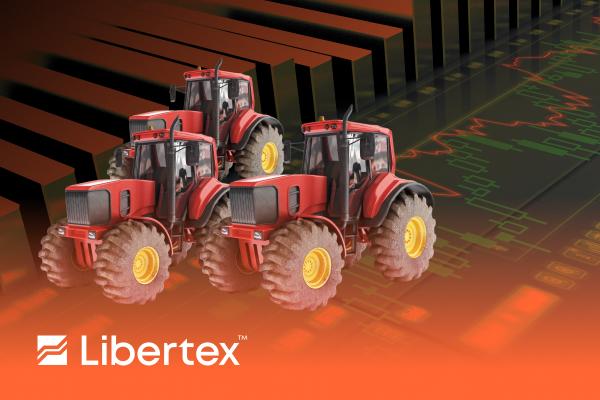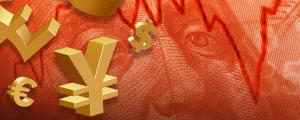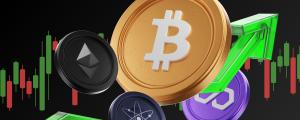Many of us thought things would get back to normal after the end of the pandemic. Oh, how wrong we were! Since then, we've had to contend with hyperinflation, rising energy prices, geopolitical instability, international conflicts, and more, with no end to the drama in sight. This time round, it's European farmers who are up in arms once again, with the latest round of protests closing several major capitals, including Brussels and Paris, as well as a host of key border crossings throughout the Old Continent.
This is a crisis that has been long in the making, but it seems the big catalyst for these latest actions was the EU's so-called Green Deal, which would see subsidies slashed, especially on agricultural diesel. For farmers, it's a simple economic calculation: costs are rising and set to rise further, yet prices for their produce are falling amid tariff waivers on low-cost Ukrainian grain imports.
It would seem that the action by agricultural producers is reversing this trend, however. Over the past month alone, wheat rose a full 10% to break through the key support of $600 a bushel and is tipped to jump further as protests continue. Given prices of around $1200 in May 2022, there's plenty of room for further rises. And with oil prices increasing simultaneously on separate geopolitical factors, investors would certainly be wise to consider their weighting of agricultural and energy commodities in the coming months. In this article, we'll take a look at some of the key drivers of price action in these markets as we try to predict where they could be headed during the rest of the year.
Politics make the world go round
Despite accounting for only 4% of the European workforce, farmers represent a vital cog in the machine, without whom Europe lacks food security. This is increasingly important as global tensions rise, and Brussels would do well to recognise this fact. There's a lot of buzz in political circles surrounding the European Net-Zero Industry Act (NZIA) and Green Deal, but many farmers worry that the requirements are impractical and unlikely to bear fruit. Targets, such as halving pesticides, cutting fertiliser use by 20%, devoting more land to non-agricultural use, and doubling organic production to 25% of all EU farmland — all by 2032 — are viewed as totally unrealistic by producers.
What's more, the €55 billion-a-year subsidy known as the common agricultural policy (CAP) has encouraged the consolidation of farms and favoured larger holdings. In fact, the CAP has seen the number of farms in the EU fall by more than a third since 2005, leading to a concentration of large, overleveraged landholdings whose low margins force them to maximise output, a decidedly un-green business model. With the NZIA now making it a legal obligation to comply with these net-zero targets, it's hard to see how EU agricultural producers can survive without prices of staple products like wheat going through the roof. The band-aid solution of allowing cheap imports from Ukraine and beyond is ultimately self-defeating and leaves Europe vulnerable in a conflict scenario.
A double whammy
As we touched upon earlier, increased hostility and the threat of global war should be bringing issues of food security into the foreground. However, another important effect of world conflict has been rising energy prices, an additional straw on the proverbial camel's back for farmers. Oil, electricity and gas have all risen sharply in the past few weeks, with Brent and Light Sweet up 10% and 9%, respectively, and OPEC+ extending its voluntary production cuts for yet another quarter. Henry Hub Natural Gas futures may be trending down, but they're still significantly above pre-pandemic levels, and a secure, reliable supply for Europe is still far from assured. Now, diesel costs are famously subsidised for European agricultural workers, but it's a drop in the ocean when many countries enjoy at-the-pump prices of around 30% of the average European price per litre.
With the European Union set to gradually withdraw its subsidy support for "dirty" fuels like diesel, something will have to give. In the absence of any other factors, the only possible result would be higher prices for agricultural products produced in the EU. This, of course, doesn't take into account the possibility that Brussels will continue to permit the tariff-free sale of lower-quality imports from third countries. However, it would be a tough ask politically, given the environmental impact of the production process in such countries and the seemingly pointless detriment to EU-based producers. In this context, it appears as though there's a reason for both wheat and oil prices to increase in the short term and stay elevated.
Trade commodity CFDs with Libertex
Libertex offers a wide range of CFDs in everything from forex, stocks, and ETFs to crypto, metals and, of course, commodities. With Libertex, you can open a variety of long or short CFD positions in agricultural commodities like wheat, soybean, and corn, as well as energy resources like Brent, WTI and Light Sweet crude oil and Henry Hub natural gas. For more information or to create your own account, visit www.libertex.com/signup today!


